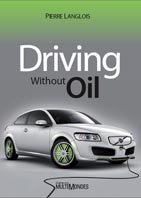
Often, when speaking of electric drive vehicles, one wonders whether the transfer of petroleum fuel emissions to emissions from power plants will actually make things better on greenhouse gases.
To answer this question, we must first consider the CO2 emissions of the various grids, expressed in grams of CO2 per kilowatt-hour of electricity produced. These values can be obtained from the statistics of ministries or departments of energy or environment in different countries or states, or through the electricity companies.
However, emissions of greenhouse gases by these organizations or corporations are often those resulting from the combustion of fossil fuels in power plants themselves. It lacks the emissions from mining coal or uranium and drilling for oil and gas. These data do not include either the transformation of raw materials and their transport, or the construction of power plants. Also missing are the emissions resulting from the decomposition of trees submerged in the reservoirs of hydroelectric dams. To account for these aspects, we must conduct a study of the life cycle of a kilowatt-hour of electricity, from the earth at the socket. Various studies have taught us, basically, to add 15% of emissions for oil and coal and 25% for natural gas. Regarding nuclear power, the emissions are usually 15 gCO2/kWh, and we must add 18 gCO2/kWh for hydroelectric dams. In doing so, we get for California, the United States, France, Canada and Québec the emission intensities in the table below.

Now, an intermediate electric car (1,500 kg), built in 2009 with the best commercially available technology, consumes approximately 17 kWh/100 km of electricity stored in its battery. In addition, with wheel-motors, a reduction in the car weight and improved aerodynamics, consumption should be reduced in the future to about 12 kWh/100 km, say around 2020. So, to assess the CO2 emissions we assume an electricity consumption of 15 kWh/100 km from the battery. We add 6% for the losses from the outlet to the battery while recharging, bringing the actual consumption to 16 kWh/100 km, from the power plant to the wheels. For CO2 emissions of the electric car, simply multiply the actual electric consumption by emissions from the various grids, as given in the previous table.
The results are presented on the chart at the beginning of this post. On this chart, there is also the CO2 emissions of various gasoline cars of different sizes for comparison purposes. The intermediate 1500 kg gasoline car (thick blue line) is equivalent to the intermediate electric car for which we've done the emissions calculations.
For CO2 emissions from conventional cars, we assume that gasoline is burned completely, which releases 2.36 kg of CO2 per liter. To take into account the CO2 released from oil well to the tank of the car, we add 15%, which corresponds to the assessments of various studies on the subject.
It is particularly interesting to note that in the United States with power stations that burn fossil fuels to produce 70% of electricity (50% from coal and 20% from natural gas), CO2 emissions of an electric car is still better than a gasoline car that consumes 5 liters per 100 km, as a Prius. In France and Québec, electric cars emit significantly less CO2 than a Prius, as can be seen.
Québec appears, in fact, a fourfold privileged place to implement the electrical mobility, due to
- the substantial reduction in greenhouse gases that will result,
- the abundance of electricity thereon,
- to its low cost (0.07 $ / kWh)
- and to the important savings in oil imports (100% of import)
To better see the difference between various types of power plants, the following graph presents CO2 emissions by an intermediate electric car whose battery is recharged with electricity from different power plants.

The method of calculation is identical to the previous graph, except the intensity of emissions that are not those of the grids as a whole, in different places, but the GHG intensity of various types of power plants, from the earth to the outlet. The following table summarizes the results obtained using the computer lifecycle analysis software GHGenius developed for Natural Resources Canada (www.ghgenius.ca.

So, as you can see, CO2 emissions from electric drive vehicles are still considerably lower than those of traditional vehicles using petroleum fuels. The last graph also shows the importance of using renewable energy to reduce our emissions drastically.




































